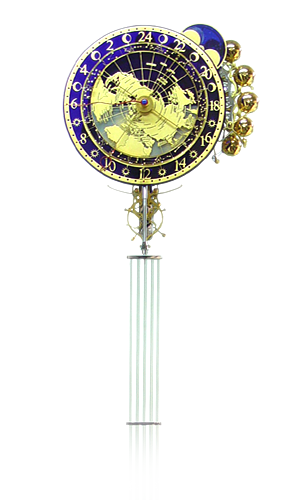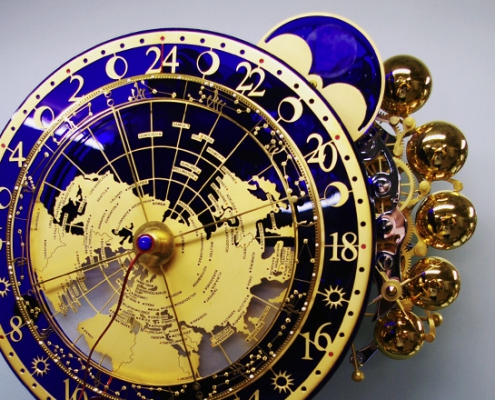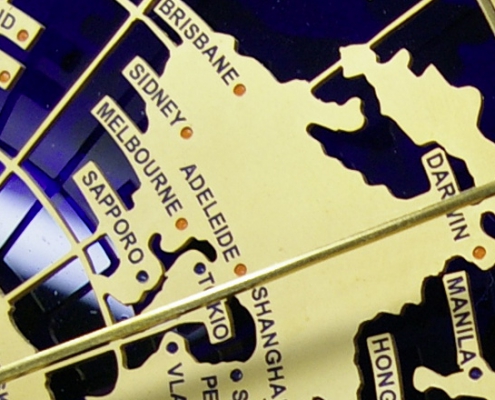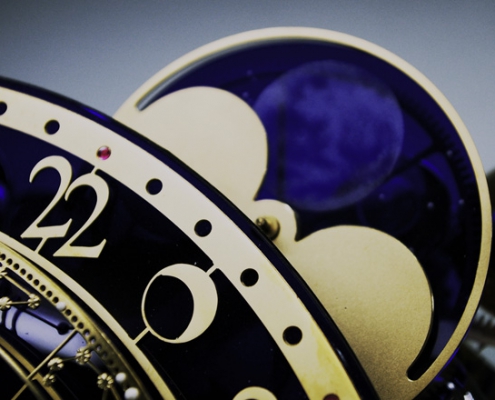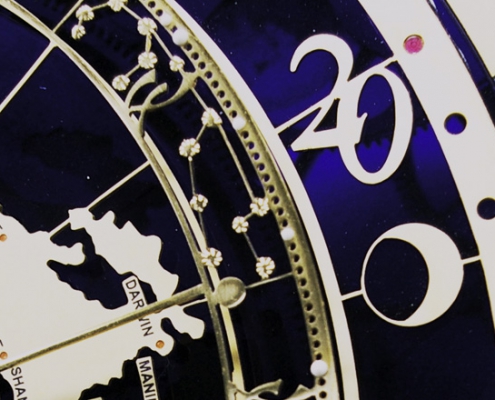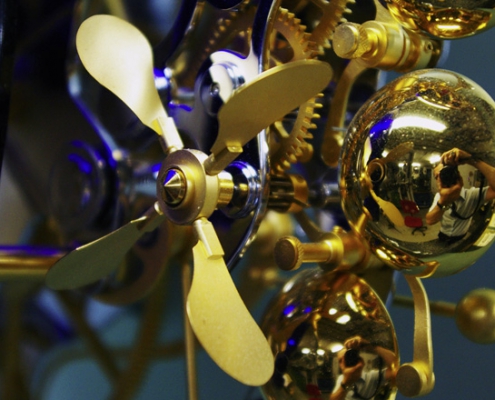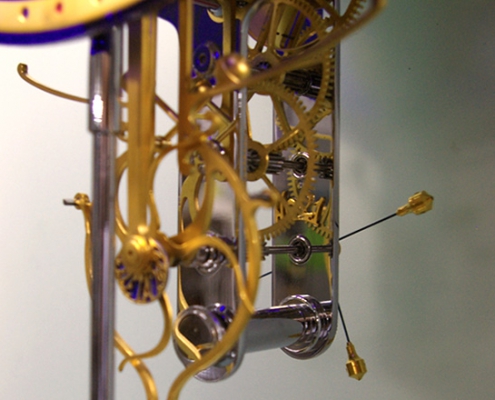Worldtime
A representation of the Earth’s globe rotates on a blue glass dial to complete one revolution around its axis in 24 hours. On the world map hand-cut in brass, the northern and southern hemispheres are displayed in superimposition. One half is set against a blue ground (night), the other a pale ground (day).
It is possible to tell the time in over 100 cities of the world, while the minutes and hour hands show local time. Positioned concentrically on the world map, an astronomical ring (featuring date, month, zodiac, winter and summer solstice, and equinox) completes one revolution around its axis once a year.
The phases of the moon are portrayed by means of a blue glass disc and a transparent glass disc. The transparent disc depicts a sand-blasted moon. The moon phase will require correction every 128 years.
A further particularity of the clock is its musical works, whose moulded bronze chimes play a pentatonic tune. At the end of every full hour, the bells chime for 15 seconds. The chiming sequence differs every time and is only repeated after many years. The world time clock.

